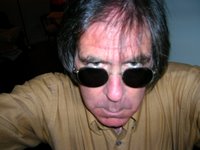
Smith Wigglesworth was born on the 8th in 1859, in Yorkshire, England. He was an influential minister in the early days of Pentecostalism. That faith places great reliance on faith healing. Laying on of hands as a means of achieving a healing is, from what I understand, a significant feature of the faith. At one point, his work took him to Sweden. He ran into a wall with the Swedish authorities when they forbade him to include the laying on of hands as part of his service. He was a flexible kind of guy however and was able to develop a sort of “corporate healing” where an afflicted person would lay their own hands on themselves to achieve the desired result. It seems to me that that takes a lot of the charm out of the whole experience, but you have to play the cards that you are dealt. Smith was a firm believer in faith healing. I mean he would have to be, wouldn’t he? He was a professional after all. He claimed that God had cured him of hemorrhoids, though I don’t want to even consider how his followers may have been able to confirm this. Not surprisingly, Smith also claimed that he could bring people back from the dead. His claims to this skill included bringing one follower back when the fellow was in his coffin at his own funeral. Apparently, Smith loved his wife dearly. He had to bring her back from the dead not once, but three times. Wigglesworth began claiming healing powers when he was eight years old.
 On the 14th in 1919, John Alcock and Arthur Whitten Brown, climbed in to the cockpit of a modified Vickers Vimy twin-engine bomber and lifted off from an airfield in St. John's, Newfoundland to begin their journey to Clifden, Ireland. If successful, theirs would be the first nonstop transatlantic flight. They made it, though they crash-landed in a bog in Clifden, Ireland, on June 15.
On the 14th in 1919, John Alcock and Arthur Whitten Brown, climbed in to the cockpit of a modified Vickers Vimy twin-engine bomber and lifted off from an airfield in St. John's, Newfoundland to begin their journey to Clifden, Ireland. If successful, theirs would be the first nonstop transatlantic flight. They made it, though they crash-landed in a bog in Clifden, Ireland, on June 15.







